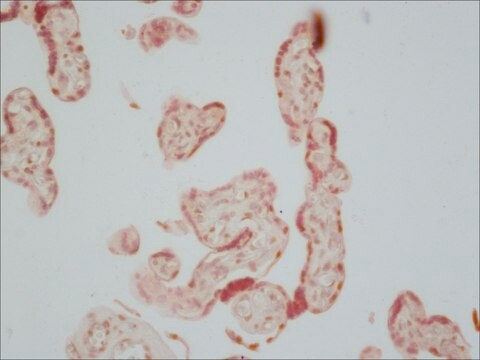A9539
Agarose
BioReagent, for molecular biology, low EEO
Synonym(s):
3,6-Anhydro-α-L-galacto-β-D-galactan, Agarose LE
About This Item
Recommended Products
biological source
algae (marine)
Quality Level
grade
for molecular biology
product line
BioReagent
form
powder
technique(s)
electrophoresis: suitable
impurities
≤10% moisture content
EEO
0.09-0.13
transition temp
gel point 36 °C ±1.5 °C (1.5% gel)
gel strength
≥1200 g/cm2 (1% gel)
anion traces
sulfate (SO42-): ≤0.15%
suitability
suitable for electrophoresis
suitable for molecular biology
foreign activity
DNase, RNase, none detected
InChI
1S/C24H38O19/c25-1-5-9(27)11(29)12(30)22(38-5)41-17-8-4-36-20(17)15(33)24(40-8)43-18-10(28)6(2-26)39-23(14(18)32)42-16-7-3-35-19(16)13(31)21(34)37-7/h5-34H,1-4H2/t5-,6-,7+,8+,9+,10+,11+,12-,13+,14-,15+,16-,17-,18+,19+,20+,21-,22+,23+,24+/m1/s1
InChI key
MJQHZNBUODTQTK-WKGBVCLCSA-N
Looking for similar products? Visit Product Comparison Guide
Related Categories
General description
Application
- in gel electrophoresis to analyze the integrity of DNA
- to prepare hydrocolloid gels and study the structural influence of gels on the release of carbohydrates
- in gel electrophoresis to analyze the integrity of RNA
- it is suitable for protein applications such as Ouchterlony and radial immunodiffusion (RID)
Biochem/physiol Actions
Features and Benefits
- Biocompatible
- Agarose gels have larger pore sizes than polyacrylamide gels at low concentrations
- Unlike polyacrylamide, the consistency of the gels is more solid (but also less elastic)
- Possesses low ethidium bromide and SYBR Green background staining
Analysis Note
Sulfate content - used as an indicator of purity, since sulfate is the major ionic group present.
Gel strength - the force that must be applied to a gel to cause it to fracture.
Gel point - the temperature at which an aqueous agarose solution forms a gel as it cools. Agarose solutions exhibit hysteresis in the liquid-to-gel transition - that is, their gel point is not the same as their melting temperature.
Electroendosmosis (EEO) - a movement of liquid through the gel. Anionic groups in an agarose gel are affixed to the matrix and cannot move, but dissociable counter cations can migrate toward the cathode in the matrix, giving rise to EEO. Since electrophoretic movement of biopolymers is usually toward the anode, EEO can disrupt separations because of internal convection.
Other Notes
Comparable product
also commonly purchased with this product
Storage Class
11 - Combustible Solids
wgk_germany
WGK 1
flash_point_f
Not applicable
flash_point_c
Not applicable
ppe
Eyeshields, Gloves, type N95 (US)
Certificates of Analysis (COA)
Search for Certificates of Analysis (COA) by entering the products Lot/Batch Number. Lot and Batch Numbers can be found on a product’s label following the words ‘Lot’ or ‘Batch’.
Already Own This Product?
Find documentation for the products that you have recently purchased in the Document Library.
Customers Also Viewed
Protocols
The GenElute Mammalian Genomic DNA Purification Kit Protocol describes the isolation of pure, high molecular weight DNA from a variety of mammalian sources.
The GenElute Blood Genomic DNA Kit Protocol provides a simple and convenient way to isolate pure genomic DNA from fresh or aged whole blood.
Our team of scientists has experience in all areas of research including Life Science, Material Science, Chemical Synthesis, Chromatography, Analytical and many others.
Contact Technical Service


